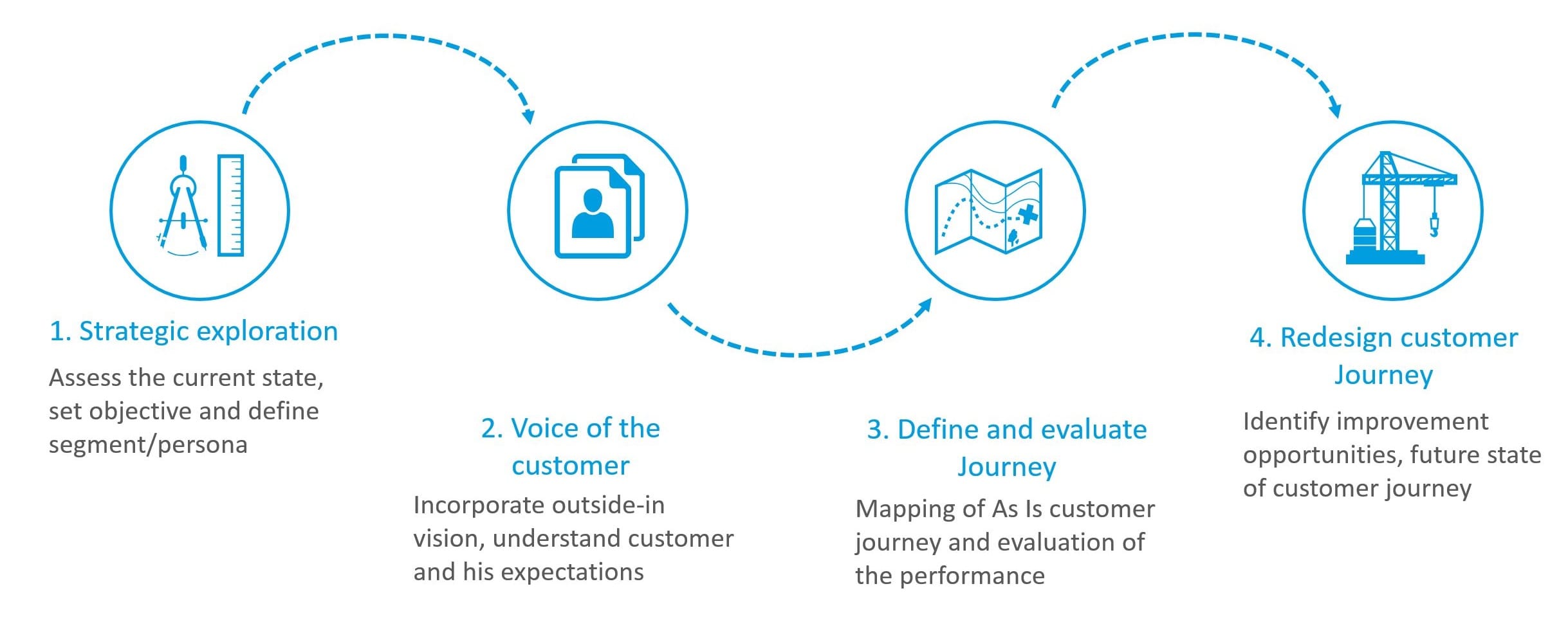Hear, hear! About 75 sales, marketing and customer service professionals accepted the invitation of bdma (Belgian Direct Marketing Association) to come and be submersed in the wonderful world of customer journey design. Interesting cases by IBM (How to become more ‘Bobular’), Carrefour (An analytical approach to the shopper journey), Lunch Garden (ROI of digital loyalty, and no, our customers are not as old as you might think ;-), Delaware Digital (Digital maturity in Belgium), Boondoggle Bright (ROI of customer journeys), and of course: 4C.
At 4C, customer journeys have been part of our daily work life for over 10 years now. Needless to say, it was our privilege to share our view on this fascinating matter, why we believe it is an essential methodology for any organization that aims for customer centricity and what we have learned during the various journey mapping & design missions we have done for our clients.
Why we believe customer journey design is for everyone?
We’re living in the age of the customer. In today’s connected society, technology has enabled customers to tune-out from the continuous flux of commercial communication and to tune-in to each other. Through social media, customers share stories, memories and experiences. Regardless whether you are in a business-to-business or business-to-consumer environment, emotion is the underpinning factor in every customer experience. Reason leads to conclusion, emotion leads to action. And more importantly, emotions will determine how you will remember your interactions with an organization. As a result, emotions will determine whether you will seek to continue or discontinue your relationship, increase or decrease your spending and promote or demote the brand.
Customer journey design is the most powerful technique available to successfully unleash the power of emotional engagement by creating superior customer experiences. Why? Because customer journey design breaks-down the customer experience into their individual components: the single interactions between a company and their customer. Customer journey design enables organizations to optimize these single interactions by maximizing the value they bring to the customer and aligning them to the experience and brand identity. But customer journey design also allows organizations to add new value-adding interactions and delete existing value-destroying interactions from the journey that defines the entire experience.

Pitfalls of customer journey design
In our talk at bdma we zoomed in on three common pitfalls of customer journey design:
1) You are not the customer
The most common mistake to make when you are new to customer journey design, is to think that you are the customer. We do urge you, however, to think as if you were the customer, but only to generate ideas, to come up with scenarios that you should then test/validate/confirm via various techniques for customer feedback capturing such as customer observation, in-depth interviews, surveys, customer panels, net promoter system,… The customer insight that you collect via these various sources will probably also lead to the conclusion that ‘the’ customer does not exist: most likely you will identify distinct customer segments that have their own very specific customer journey. Persona design can be very helpful in working with these segments in your customer journey design activities.
2) More than facts
When mapping customer journeys, you should try to go beyond the purely rational and objective facts: do not only describe what a customer (segment) does at each single interaction with your organization, but also add what your customer (segment) thinks and feels. To what extent do you deliver your customer’s preferred journey in terms of touch points and channels? What emotions are evoked, both value driving and value destroying along the customer journey?
3) Design, not mapping
Customer journey mapping is an important starting point, but the true added value lies in customer journey design. This means optimizing customer interactions and customer touch points, but also adding new value-adding interactions and deleting existing ones that do not add value. Best in class CRM cloud technologies such as Salesforce.com, Pardot and Exact Target can bring your design blueprints to life.

